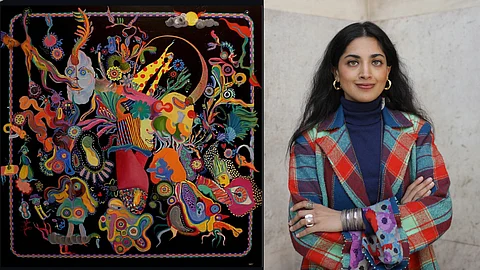
- HOMEGROWN WORLD
- #HGCREATORS
- #HGEXPLORE
- #HGVOICES
- #HGSHOP
- CAREERS
- ABOUT US
- CONTACT US

Among all the fandoms I'm part of, NBC Hannibal's the one that I find the most passionate. Nine years after its last season, the fans are still as intrigued by and immersed in the series' universe, as they were when they first saw it. This impact the show had can be credited to screenwriter Bryan Fuller's approach to the existing Hannibal story.
Bryan used the premise of a cannibal and a police investigator as a commentary of good and evil, which forms the core of all mythological scriptures. The series became a vehicle for psychoanalysis through Daedalian visual metaphors; pushing the themes into archetypal territories. This is what, I think, made the show larger than life: it's the way it encapsulated the inner workings of individual and collective consciousness.
Humankind's desire to understand ourselves is perhaps the oldest quest to exist. Art in infinite ways has facilitated that, making it a necessity in one's evolution. To homegrown artist Ayushi Patni, revelations of the self come in colours. Her practice explores the intersections of mythology, science fiction, and the inner landscapes of human experience; reflecting the interplay between the microcosm and macrocosm and depicting how the smallest elements of existence can mirror the grander structures of the universe. Ayushi's psychic maps that are built by abstract forms, precision, balance, symmetry, spatial possibilities, vivid palettes and colourful interpretations, invite the viewers into an exploration of their mind's mysteries.
Colour is central to Ayushi's process, as she uses it to depict the tension between the seen and unseen; creating contrasts that reflect inner psychic landscapes. In her ‘Neuro-Micrograph’ series, the artist uses watercolours, gouache, and ink to create abstracted, biomorphic forms that represent the inner workings of a thought cell. The colours symbolize emotions and psychological states, adding layers of narrative related to the complexities of the mind and emotion. Through her ‘Microcosm’ and ‘Macrocosm’ series, she explores the relationship between inner and outer worlds using symbolic, abstract forms, and vibrant colour schemes that evoke psychological and emotional states.
From representing the dichotomies of the masculine and the feminine, to traversing human desire, Ayushi has developed her unique visual language to cultivate a deeper appreciation for the profound aspects within and beyond us. Her art stands at the intersection of art, architecture and spirituality; charting a journey into oneself through emotive pathways inspired by visual geometry.
Follow Ayushi here.
If you enjoyed reading this, here's more from Homegrown:
Mapping Identity: Anoushka Mirchandani's Self-Portraits Explore Womanhood & Migration
Riya Chandiramani's Cereal Boxes Depict The Interplay Of Gender, Patriarchy & Capitalism
Theegulla Venkanna's Embroidered Visions Connect Mankind & Nature Through Sexuality
